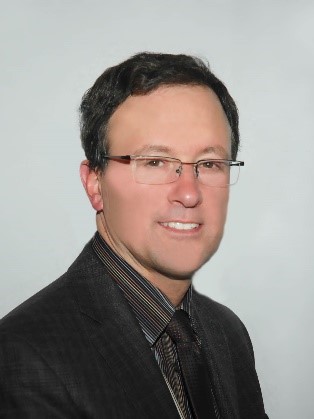Christian Giguère s'est joint à l'Université d'Ottawa en 1995 et est actuellement professeur au Programme d’audiologie et d'orthophonie à l'École des sciences de la réadaptation. Il enseigne en acoustique, en sciences de la parole, en instrumentation en audiologie et en amplification par prothèse auditive. Ses intérêts de recherche comprennent la communication verbale dans le bruit, la perception des avertisseurs sonores, la prévention de la perte auditive et les critères d’embauche portant sur l’audition. Il est l'auteur de plus de 150 articles scientifiques, actes de congrès et chapitres de livres. Il est aussi actif dans le domaine de la normalisation au sein de plusieurs groupes de travail techniques nationaux (CSA, ANSI) ou internationaux (ISO) sur des sujets liés à la perte auditive en milieu de travail bruyant, la protection auditive et l'audiologie. Il a été président de l'Association canadienne d'acoustique (ACA) et co-président de la Commission internationale sur les effets biologiques du bruit (ICBEN). Il est président du comité technique Z1007 sur la perte auditive professionnelle de l'Organisation canadienne de normalisation (CSA) et rédacteur adjoint de l'International Journal of Audiology (TIJA). Il est membre international distingué de l'Institute of Noise Control Engineering (INCE-USA).
Christian Giguère

Profil
Christian
Giguère
Professeure titulaire
1994 Ph.D. Génie de l'information, Université de Cambridge
1989 M.Eng. Génie mécanique, Université de Toronto
1986 M.A.Sc. Génie électrique, Université de Toronto
1983 B.Sc.A. Génie physique, Université Laval
Salle
RGN 3056
Numéro de téléphone
613-562-5800 poste 4649
Courriel
Biographie
Intérêts de recherche
- Perception de la parole et des avertisseurs sonores dans le bruit
- Prothèses auditives, protecteurs auditifs et systèmes de communication
- Prévention de la perte auditive en milieu de travail bruyant
- Critères d’embauche portant sur l’audition
Publications
- Laroche C., Giguère C., Vaillancourt V., Marleau C., Cadieux M.-F., Laprise-Girard K., Gula E., Carroll V., Bibeau M., and Nélisse H. (2021). “Effect of Hearing and Head Protection on the Localization of Tonal and Broadband Reverse Alarms,” Human Factors. In press
- Giguère C., Lagacé J., Ellaham N.N., Pichora-Fuller M.K., Goy H., Bégin C., Alary É., and Bowman R. (2020). “Development of the Canadian Digit Triplet Test in English and French,” J. Acoust. Soc. Am. 147, EL252-EL258
- Giguère C., Vaillancourt V., and Laroche C. (2019). “Effects of hearing loss and language proficiency on speech intelligibility over radio transmission with tactical communication devices,” International Journal of Audiology 59, S31-S39.
- Nakashima A. and Giguère, C. (2019). “Towards an improved hearing safety standard for impulse noise exposure in the Canadian Armed Forces,” Journal of Military, Veterans and Family Health 6(1), 98-107.
- Giguère C., Laroche C., Vaillancourt, V., and Soli S.D. (2019). “Development of Hearing Standards for Ontario’s Constable Selection System,” International Journal of Audiology 58(11), 798-804.
- Nassrallah F., Ellaham N.N., Giguère C., and Dajani H.R. (2019). “An indirect calculation method for estimating occupational sound exposure from communication headsets,” J. Acoust. Soc. Am. 145(2), 749-760.
- Vaziri G., Giguère C., and Dajani, H.R. (2019). “Evaluating noise suppression methods for recovering the Lombard speech from vocal output in an external noise field,” Int. J. of Speech Technology 22, 31-46.
- Soli S.D., Giguère C., Laroche C., Vaillancourt V., Dreschler W.A., Rhebergen K.S., Harkins K., Ruckstuhl M., Ramulu P., and Meyers L.S. (2018). “Evidence-based occupational hearing screening I: Modelling the effects of real-world noise environments on the likelihood of effective speech communication,” Ear Hear 39 (3), 436–448
- Soli S.D., Amano-Kusumoto A., Clavier O., Wilbur J., Casto K., Freed D., Laroche C., Vaillancourt V., Giguère C., Dreschler W.A., and Rhebergen K.S. (2018). “Evidence-based occupational hearing screening II: Validation of a screening methodology using measures of functional hearing ability,” International Journal of Audiology 57(5), 323-334.
- Laroche C., Giguère C., Vaillancourt V., Roy K., Pageot L-P., Nélisse H., Ellaham N., and Nassrallah F. (2018). “Detection and reaction thresholds for reverse alarms in noise with and without passive hearing protection,” International Journal of Audiology 57(S1), S51-S60
- Al Osman R., Giguère C., and Dajani H.R. (2018). “Effects of early and late-arriving room reflections on the speech-evoked auditory brainstem response,” Journal of the American Academy of Audiology 29(2), 95-105.
- Al Osman R., Dajani H.R., and Giguère C. (2017). “Self-masking and overlap-masking from reverberation using the speech-evoked auditory brainstem response,” J. Acoust. Soc. Am. 142(6), EL555-EL560.
- Giguère C., Vaziri G., Dajani H.R., and Berger E.H. (2017). “Speech communication with hearing protectors,” NHCA Spectrum 34 (2), 15-19.
- Al Osman R., Giguère C., and Dajani H.R. (2016). "Effects of stimulus rate on speech-evoked auditory brainstem response," Canadian Journal of Speech-Language Pathology and Audiology 40(2), 105-119.
- Nassrallah F., Giguère C., Dajani H.R., and Ellaham N.N. (2016). “Comparison of direct measurement methods for headset noise exposure in the workplace,” Noise & Health 18(81), 62-77.
- Vaillancourt V., Gendron M., Leroux T., Laroche C., Leroux T., Fortier P., Paré L., Giguère C. et Voix J. (2016). « Utilisation des prothèses auditives en milieu de travail bruyant – Problématique, pratiques courantes et outils utilisés par les intervenants de la santé pour répondre aux besoins des travailleurs », Travail et Santé 32(1), 20-25.
- Giguère C., and Berger E.H. (2016). “Speech communication in noise under hearing protection: A computational study of the combined effects of hearing loss and hearing protector attenuation,” International Journal of Audiology 55(S1), S30-S40.